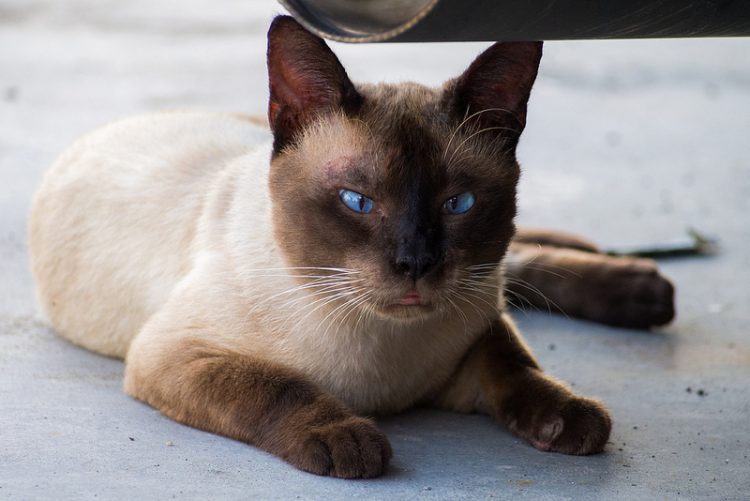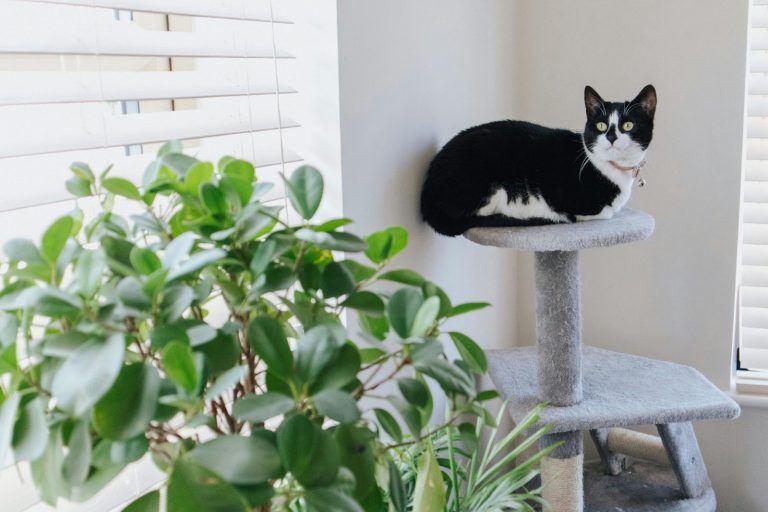Did Your Cat Wake Up Cross-Eyed? It Could Be Haws Syndrome.
It may look scary, but it’s usually easy to treat.

Have you heard of Haws syndrome? This condition is common and looks alarming, but usually it’s nothing to worry about.
Here’s a scenario: You wake up to find that, overnight, your cat has become cross-eyed. There is a white skin across the inside corner of both eyes. She’s a little quiet but otherwise OK, although she did have a tummy upset the previous day.
You start to feel anxious. Could something be horribly wrong? You reach for the phone and call the veterinarian.

Don’t leave your pet’s safety to chance
Sign up for Petful recall alerts today.

Symptoms
These are easy to spot because they involve the eyes — or, rather, the third eyelid in the inner corner of each eye. Didn’t know the cat has a third eyelid? Its job is to flash across the eye like a shield and protect the cornea from scratches.
In Haws syndrome, this extra eyelid covers part of the cornea, and instead of springing back into place, it stays put. This is obvious because 2 white membranes partially cover the eye, which makes the cat look cross-eyed.
Symptoms of Haws syndrome:
- Diarrhea
- Lethargy
- Reduced appetite
- Fever (rare)
- And, of course, that cross-eyed look
Not all cases of “third eyelid protrusion,” as this is called, are down to Haws syndrome. When a cat loses weight or is under the weather, this membrane slides across as a general sign the cat’s unwell. The vet’s job, therefore, is to work out if this is Haws syndrome or something else needing treatment.
Causes
When science doesn’t know the cause, the condition is labeled idiopathic. This is really a fancy way of saying “No one knows.”
However, there are 2 smoking guns when it comes to possible causes of Haw’s syndrome:
- Tapeworm infection
- Mild diarrhea caused by the Toro virus
The exact reason why the third eye should pop across under these circumstances is not known (idiopathic). Researchers haven’t put a great deal of effort into finding out because true Haws syndrome is mild and usually settles down with minimal treatment.

It Might Not Be Haws Syndrome
As I said earlier, there are other conditions that are more serious and do need treatment, and they first must be ruled out.
Some examples include:
- Conjunctivitis
- Horner’s syndrome (an issue with the nerve supply to the eye)
- Dysautonomia (nerve damage)
- Tetanus
- Inflammatory bowel disease
- Illnesses such as FeLV or FIV infection
- Bowel cancer
- Infection with campylobacter, salmonella or giardia
Diagnosis
The vet checks when the cat was wormed last and takes a medical history. She then examines the patient and troubleshoots from problems such as tenderness in the abdomen or poor coordination. She may decide blood tests or fecal analysis is necessary to rule certain conditions out.
In addition, Haws syndrome tends to occur in younger cats and those with outside access or contact with a cat that goes outdoors. Knowing this can raise the vet’s suspicion about what she’s dealing with.
Treatment
Once all other problems have been ruled out, the vet may prescribe a de-wormer that’s effective against tapeworm (not all de-wormers are) if your cat shows signs of Haws syndrome.
This link with tapeworms could also explain why outdoor cats are most commonly affected, because those in contact with wildlife are more likely to pick up fleas (which carry tapeworms) or ingest tapeworm from prey.
The other connection, as we discussed, is Toro virus. This infection causes mild diarrhea, which often settles down on its own after a while.
Once Haws syndrome develops, it sticks around for several weeks. The average time it takes for those third eyelids to slide back into place is 4–16 weeks, so don’t expect a quick fix.
Sensible Steps
If your cat seems otherwise well, try the following with your vet’s guidance:
- De-worm against tapeworm.
- Feed a bland, easy-to-digest diet that’s gentle on the gut to sort out the diarrhea.
- Wait — often several weeks — for the signs to resolve.
- Finally, if your cat deteriorates or new signs develop, this could mean the problem is something other than Haws syndrome, and therefore a trip to the vet is in your cat’s best interests.
This pet health content was written by a veterinarian, Dr. Pippa Elliott, BVMS, MRCVS. It was last reviewed Oct. 11, 2018.







